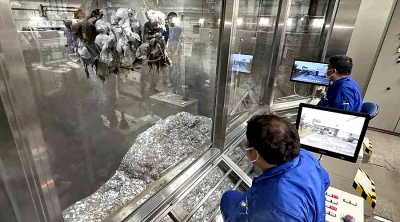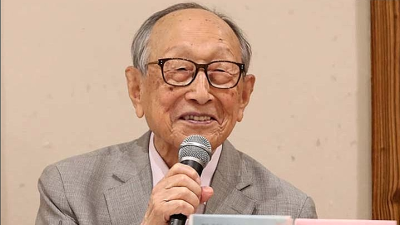In the past 40 years, under the initiative of the Look East Policy, the Malaysian government has sent many students to study in Japan every year. At the same time, the Japanese government also provides scholarships (MEXT Scholarship) to outstanding local students to study in that country. The number of Malaysian scholars going to Japan for undergraduate studies has hit a high record last year.
The relationship between Malaysia and Japan in education does not stop there.
The Malaysian branch of University of Tsukuba is in progress, while the Nippon Designers School (NDS) Malaysia College is scheduled to open in June this year.
The Japanese government offers MEXT scholarships for Malaysians to pursue undergraduate and postgraduate studies in Japan, with the number of recipients hitting a record last year.
Scholarships for undergraduate, postgraduate studies
According to Japan Student Services Organisation (JASSO), before the outbreak of Covid-19 in 2019, there were about 3,000 Malaysian students studying in Japan, of whom 227 were on Japanese government scholarships, accounting for 7.4% of all Malaysian students.
The Japanese government has been providing scholarships (MEXT Scholarship) to international students since the 1950s.
There are two main types of MEXT scholarships. One is to sponsor students to study undergraduate programs while the other is for postgraduate degrees.
Competition for undergraduate scholarships has been stiff. In 2021, for example, the Japanese government provided a total of 125 scholarships for students around the world, nine awarded to Malaysians, a record for Malaysian students receiving this scholarship over the years.
Mr Saito Yukiyoshi, the First Secretary, Education and Science Attache of the Japanese Embassy in Malaysia, pointed out that six or seven years ago, only two or three Malaysian students received this scholarship each year on average. In 2021, the number increased to nine, showing the great potential for Malaysian students.
The Embassy hopes to see more Malaysian students benefiting from this scholarship.
On the other hand, Saito revealed that Malaysians are offered 25 postgraduate scholarships each year. Last year, the response was overwhelming, with about 300 applicants.
Engineering courses preferred by Malaysians
Under the Look East Policy, majority of Malaysian students have opted to study engineering in Japan.
According to JASSO’s statistics, there were 3,094 Malaysian students studying in Japan in 2019, half of whom engineering students totalling 1,530.
In the past, many Malaysians studied in Japan because of its advanced technology. But to Saito’s understanding, many Malaysian students nowadays opt to study in Japan because of the influence of anime, manga or games.
Anyway, technology is still a strength of Japanese higher education.
Saito cited the example of the Nobel Prize. A total of 19 Japanese scientists have won the Nobel Prizes in the 21st century, and this means the research quality of Japanese universities is very high.
Not only that, Japanese universities have also been actively engaging in internalisation in recent years. The learning environment has become more and more friendly to international students.
Over the years, many people have been hesitant to further their studies in Japan due to the language barrier. However, some Japanese universities are offering all-English programs nowadays, and international students may not actually need to be fluent in the Japanese language, especially in postgraduate courses, said Mr Saito.
For example, the distinguished University of Tokyo launched the PEAK program in 2012. There are two courses under the PEAK program taught entirely in English, namely “The International Program on Japan in East Asia” and “The International Program on Environmental Sciences”.
In September 2021, 64 students were admitted to the PEAK program, two from Malaysia.

Malaysian campuses of Japanese universities
Besides attracting Malaysian students to study in Japan, the country has also deepened its collaboration with Malaysia in the education sector.
For instance, the Malaysia-Japan International Institute of Technology (MJIIT) is an institution jointly established by the governments of Malaysia and Japan in 2011.
Located within the Kuala Lumpur campus of Universiti Teknologi Malaysia (UTM), MJIIT mainly provides Japanese engineering education for Malaysian as well as foreign students, said Mr Saito said.
So far more than 1,500 people have graduated from the institute.
By the way, construction of the Malaysian branch of the University of Tsukuba is still in progress. As this is the first time a Japanese university establishes a branch campus overseas, Mr Saito said all parties have taken this very seriously, with hopes the university, which boasts three Nobel Prize Laureates, will open its branch successfully.
But before that, another Japanese school took the lead in offering courses in Malaysia.
The Nippon Designers School (NDS) located in Bandar Sunway is scheduled to officially open in June this year.
According to the school’s website, it will offer diploma programs in Japanese manga illustration.
Postgraduate scholarships open for application now
The 2023 MEXT Scholarship for postgraduates is currently open for application. The deadline is 4pm on April 29.
Meanwhile, details for the 2023 MEXT Scholarship for undergraduates will be announced later this month. Those interested please watch out for the news section of Sin Chew Daily.
The elimination process for undergraduate scholarships includes a written test and an interview session.
Mr Saito said the higher the score in the written test, the higher chance to get into the interview session.
Applicants not only have to score excellent grades, they are also required to have a clear vision for studying in Japan.
Mr Saito welcomes Malaysian students to apply for MEXT scholarships. They will not only benefit from the high-quality Japanese education, but also have the opportunity to stay and work in Japan after graduation.
What you need to know before going to Japan
Malaysian students wishing to enter Japanese universities must complete 12 years of formal education basically.
This is because in Japan, students undergo 12 years of formal education which consists of six years elementary, three years lower secondary and three years upper secondary education.
This is not a problem for UEC, STPM and ‘A’ Level graduates. But for SPM and ‘O’ Level graduates with only 11 years of education, they will need to take an additional 1-1.5 year matriculation course.
In Japan, Bachelor’s, Master’s and Doctoral degrees are four years, two years and three years respectively.
Japanese universities’ academic year normally start in April, but there are also many courses, especially graduate courses, that start in September or October.
ADVERTISEMENT
ADVERTISEMENT








































